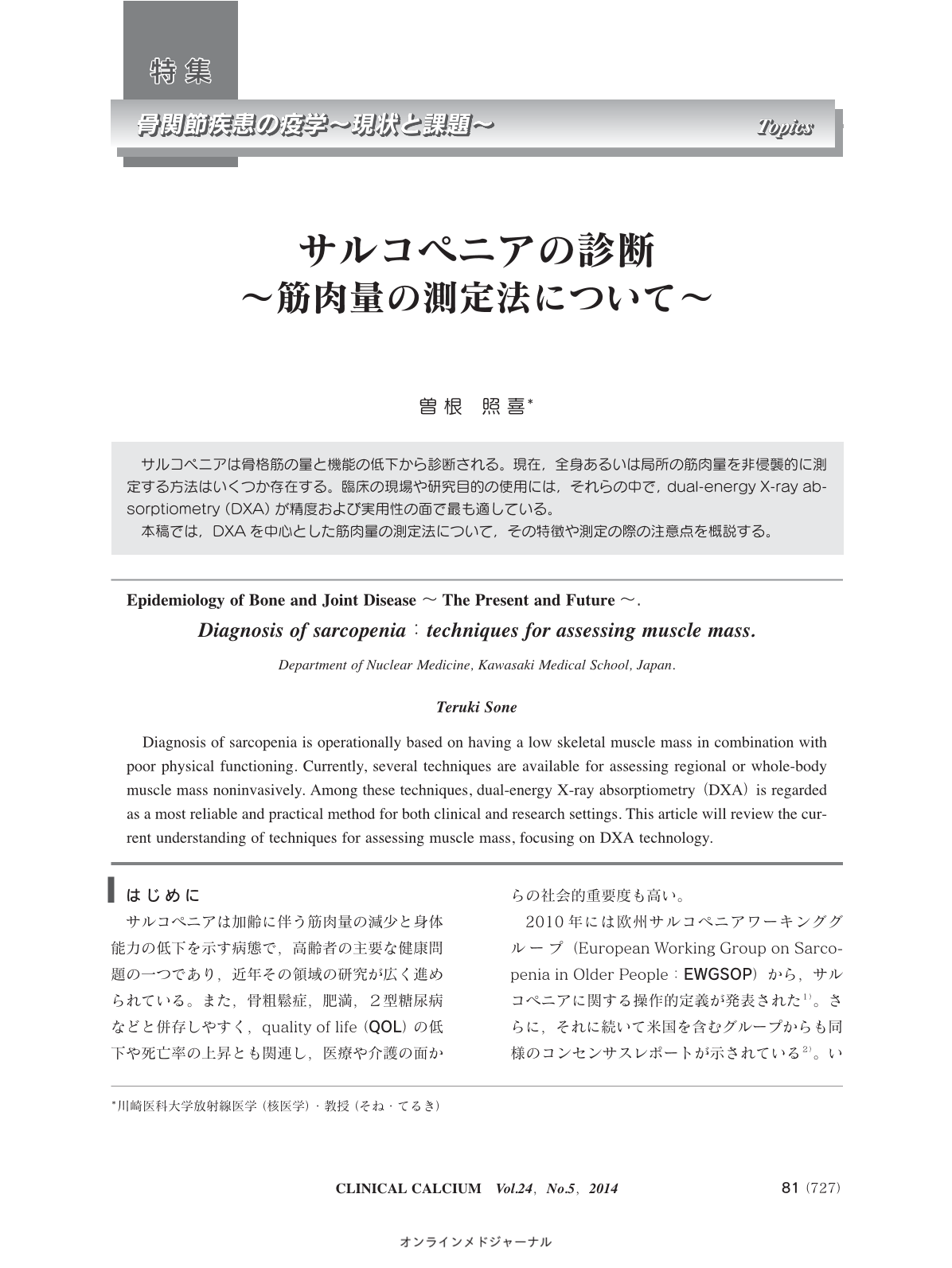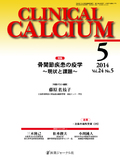Japanese
English
特集 骨関節疾患の疫学 ~現状と課題~
Topics
サルコペニアの診断~筋肉量の測定法について~
Epidemiology of Bone and Joint Disease ~The Present and Future~. Diagnosis of sarcopenia:techniques for assessing muscle mass.
曽根照喜
1
Sone Teruki
1
1川崎医科大学放射線医学(核医学)・教授
1Department of Nuclear Medicine, Kawasaki Medical School, Japan.
pp.727-732
発行日 2014年4月28日
Published Date 2014/4/28
DOI https://doi.org/10.20837/4201405081
- 有料閲覧
- Abstract 文献概要
- 1ページ目 Look Inside
- 参考文献 Reference
サルコペニアは骨格筋の量と機能の低下から診断される。現在,全身あるいは局所の筋肉量を非侵襲的に測定する方法はいくつか存在する。臨床の現場や研究目的の使用には,それらの中で,dual-energy X-ray absorptiometry(DXA)が精度および実用性の面で最も適している。 本稿では,DXAを中心とした筋肉量の測定法について,その特徴や測定の際の注意点を概説する。
Diagnosis of sarcopenia is operationally based on having a low skeletal muscle mass in combination with poor physical functioning. Currently, several techniques are available for assessing regional or whole-body muscle mass noninvasively. Among these techniques, dual-energy X-ray absorptiometry(DXA)is regarded as a most reliable and practical method for both clinical and research settings. This article will review the current understanding of techniques for assessing muscle mass, focusing on DXA technology.



